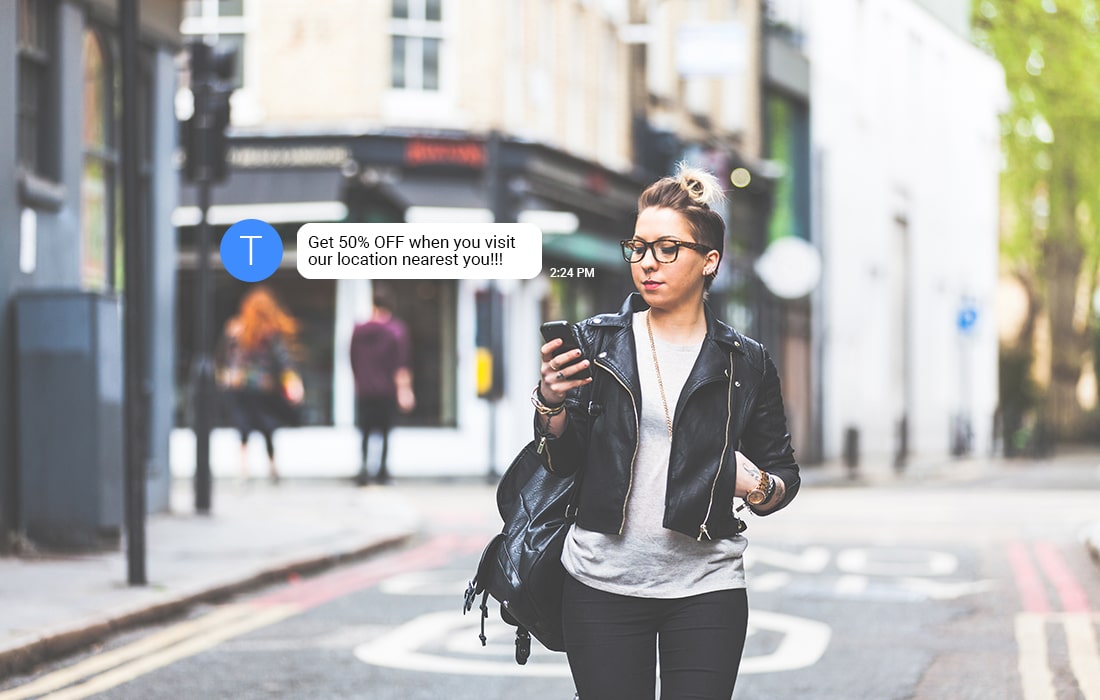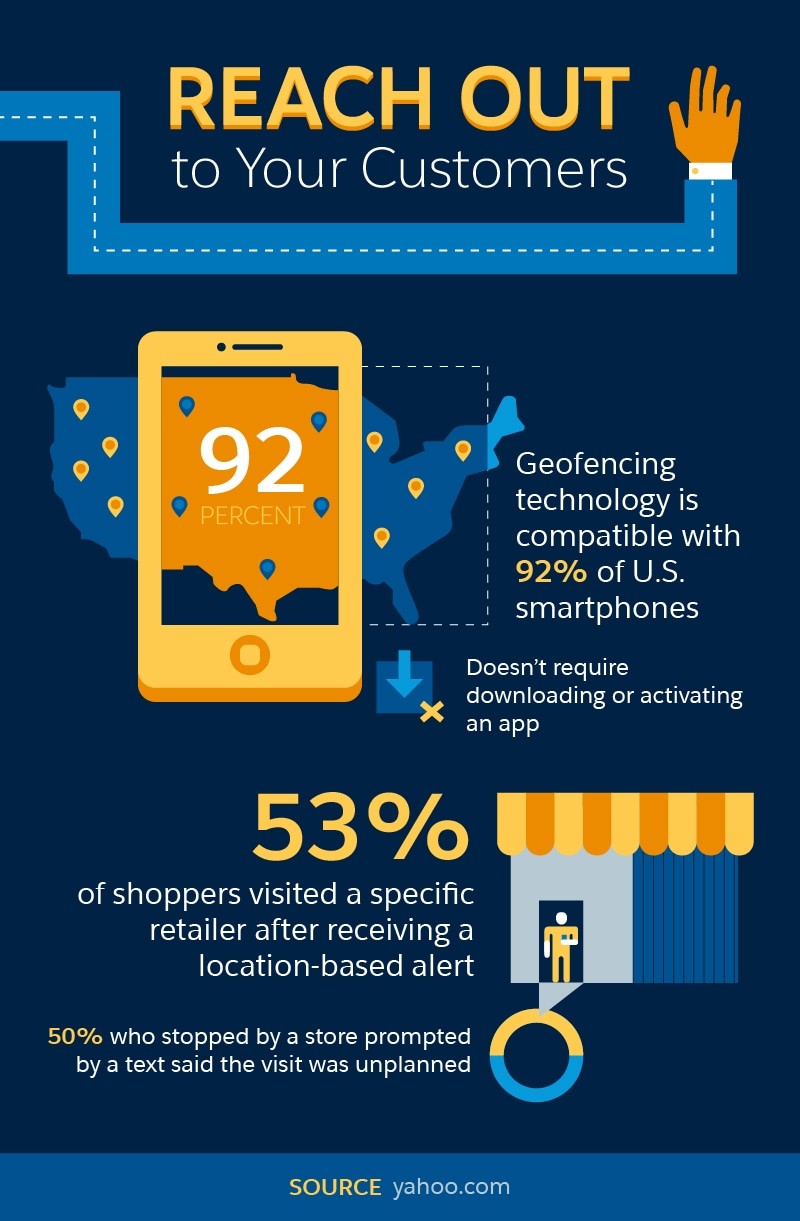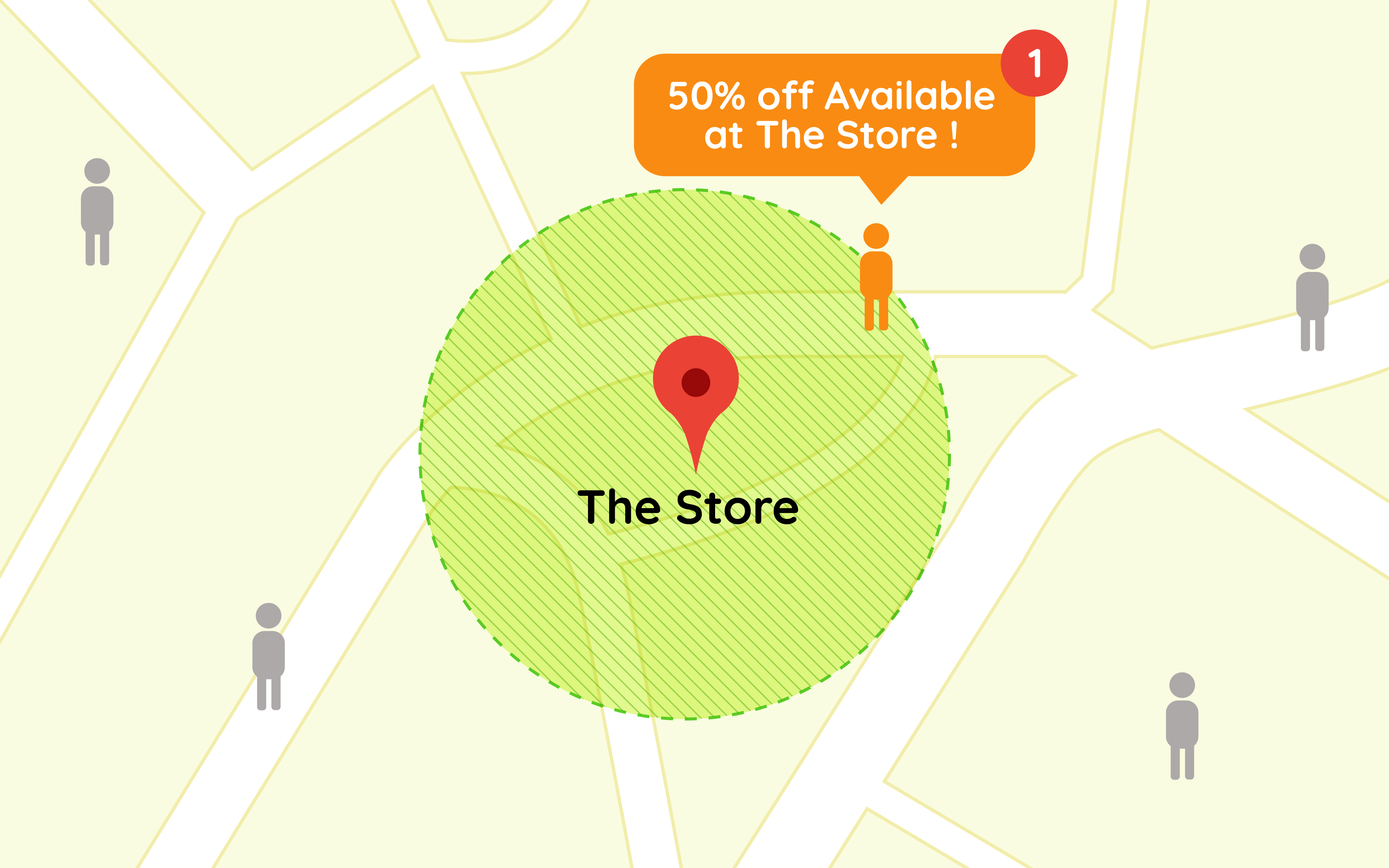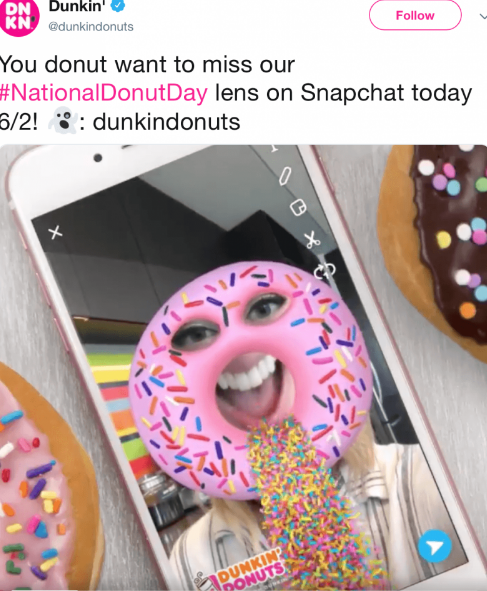
Dec
Geofencing Marketing 101

What is Geofencing Marketing?
Geofence marketing is a form of location-based marketing that allows you to connect with smartphone users in a designated area. In other words, geofencing creates virtual boundaries around real-world geographical points of interest. The service utilizes GPS, RFID, WiFi, or cellular data to trigger a pre-programmed action when a person enters a “fenced” area set by marketers. These actions could include mobile push notifications, text messages, or targeted advertisements on social media. Offering a powerful, innovative way for businesses to engage with customers. However, it doesn’t work for everyone. Is it the right fit for your business? We’ll talk about that along with practical applications of geofencing, its shortcomings, and if it’s a viable option for your marketing strategy. Coming right up!

Powerful Geofencing Uses
There are many different applications for geofencing marketing to fit a variety of scenarios. From persuading window shoppers, to stealing customers from your competition, geofencing can be a useful tool.
Coax Passersby: Perhaps the most common and most effective way to utilize geofencing marketing is to lure in potential customers in the vicinity of your business. For example, if a business sets up a geofence around their brick-and-mortar store, a customer driving or walking by would receive a text message or push notification with a special offer when they enter the fence. These offers could be just the push someone needs to enter your store and make a purchase.

Social Media Influence: You’ve got your own social media down pat, but what about recruiting customers to do your posting for you? Snapchat’s geofencing marketing allows marketers to create customized filters to become available when users are within a certain radius. So, while your customers browse your shop, their posts can have your unique branding on them. Dunkin did a super awesome job with this during National Donut Day.

Competitor Challenge: Geofencing marketing can also be used to get an edge on the competition. For example, rather than setting up a geofence around your own business, you could set a virtual perimeter around your competition’s business. Then, target them when a customer exits the geofence after a visit. Perhaps something like, “Checking out a vehicle at XYZ car dealership? ABC dealership has a super vehicle sale going on right now.” Give them something to show the grass truly is greener on the other side of the fence.
Target Service Area
Similarly, businesses can put a geofence around a target service area to entice customers in that area. Uber has mastered this practice. They know airports are teeming with travelers looking to get from point A to point B. Thus, Uber entices travelers to use their app by placing geofences around airports. When someone lands within the fence, they’ll receive a notification pushing them toward the app. Your business could do the same. Perhaps you’re trying to build up business in a certain area. Send those customers a special offer through geofencing.

Event Marketing
Hosting a big event? Geofencing marketing has a wide variety of use cases that can make it a big success. Not only can you target the areas and hype the event up beforehand. You can interact with attendees and build engagement during the event as well. Sending them notifications for important updates, information, and alerts.
Drawbacks of Geofencing Marketing
There are many useful applications of geofencing marketing. However, there are some common pitfalls that deter marketers from adopting the strategy. For example, a customer must have their location services on and be inside your fence for the system to work. With almost one-third of people (31%) not enabling their location information for businesses, that’s a lot of missed opportunities. But that’s not the only shortcoming of geofencing marketing.
Geofencing can be expensive. With many businesses moving online and offering remote services, targeting a geographic area isn’t as cost-effective as other forms of marketing. While geofencing will absolutely target a very specific customer base, it can waste valuable marketing dollars better spent on larger-scale digital advertising. Just like with any strategy, it’s important to consider your marketing goals and then decide what is right for you.
Geofencing: Powerful or Pointless?
Geofencing marketing presents a unique opportunity to connect with your audience. But, it’s not a perfect fit for every business. So, to answer the question of whether geofencing is powerful or pointless, you must reflect on your individual business. What are your goals? If you’re looking for strategies that target a few specific geographic locations, this is one of the best. However, if you’re trying to target a large area or you don’t have a lot of time to put into your marketing, you might find yourself asking. Is it worth the costs? Remember, geofencing marketing is not a one-size-fits-all option. So weigh your options carefully and then decide, based on your goals, whether or not to incorporate it into your strategy.
Looking for help with geofencing? Interactive Design Solutions has been helping businesses fine-tune their marketing strategies for over a decade. We love discussing your business and finding the right marketing strategy for you. Give us a shout!

No Comments